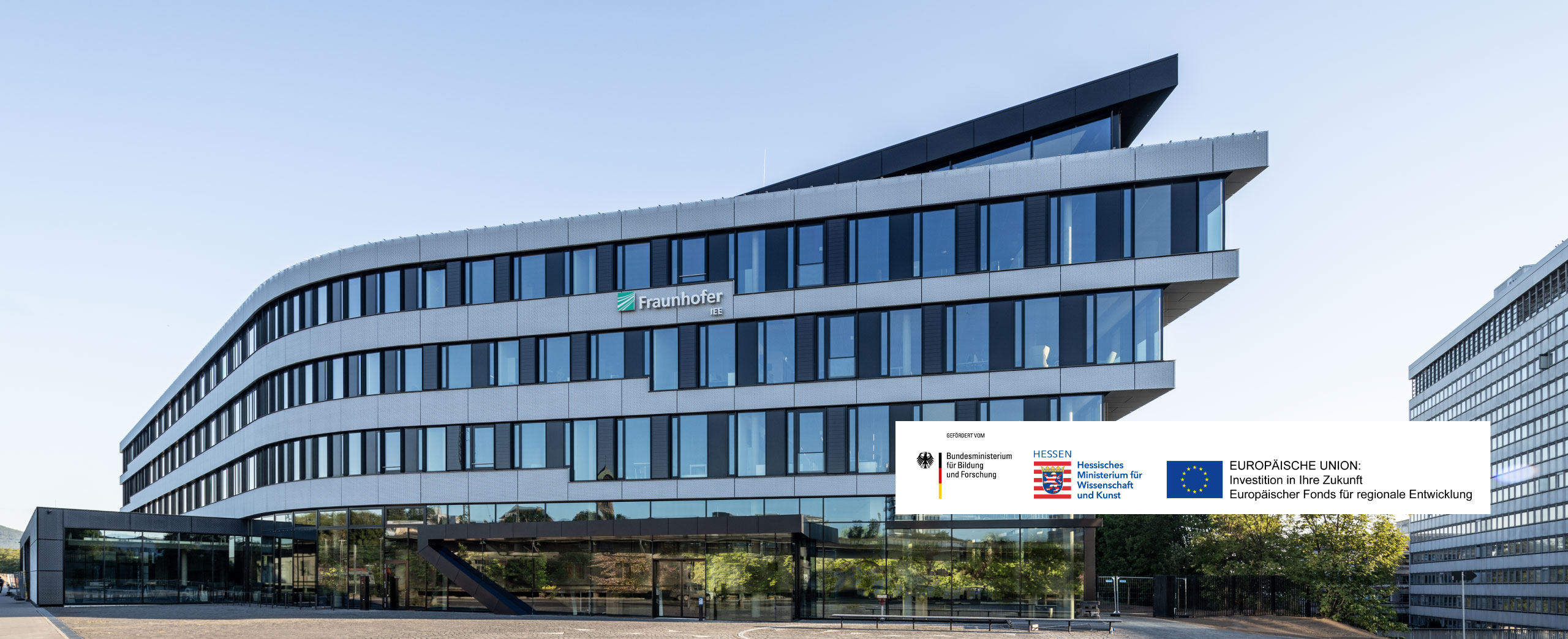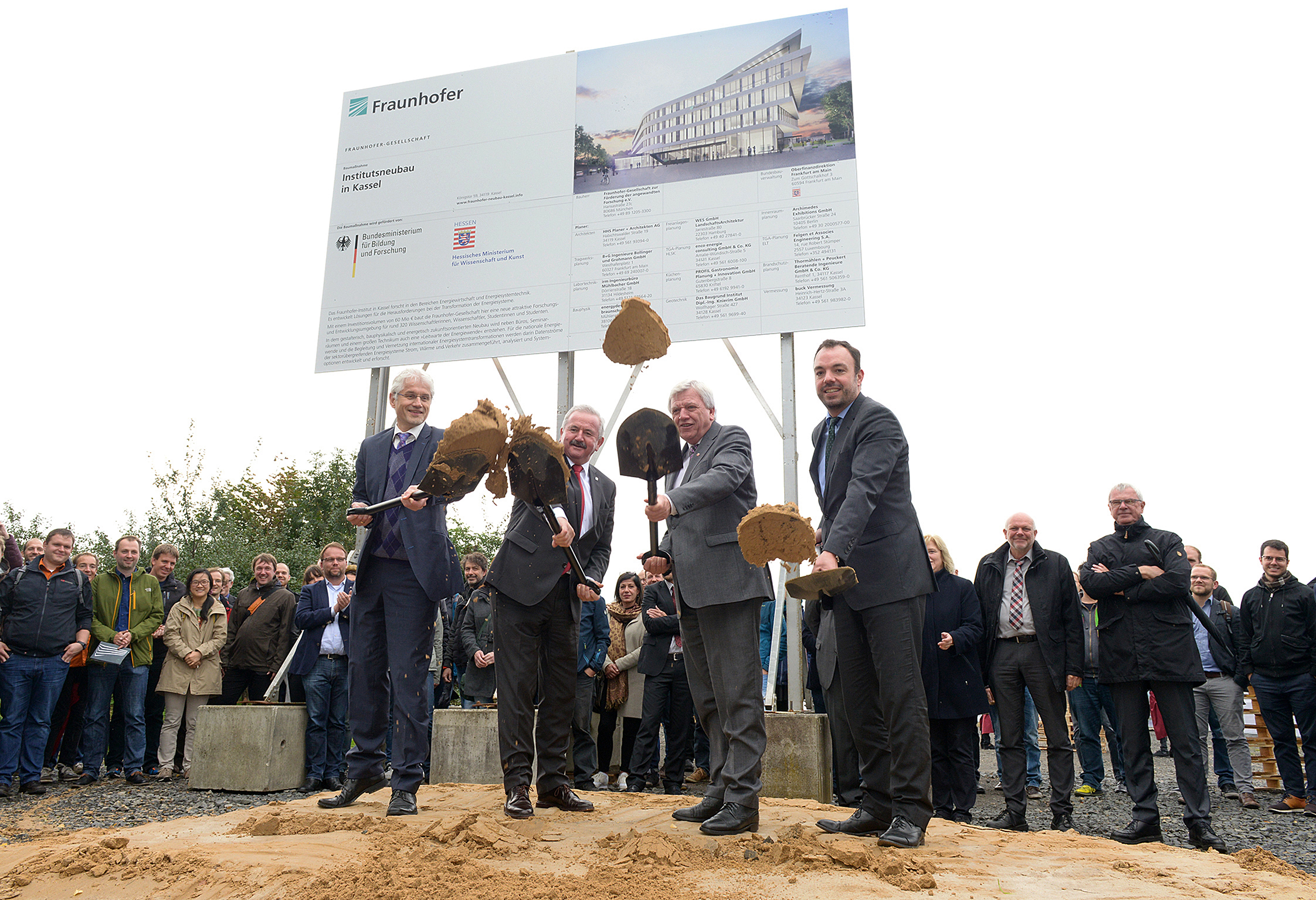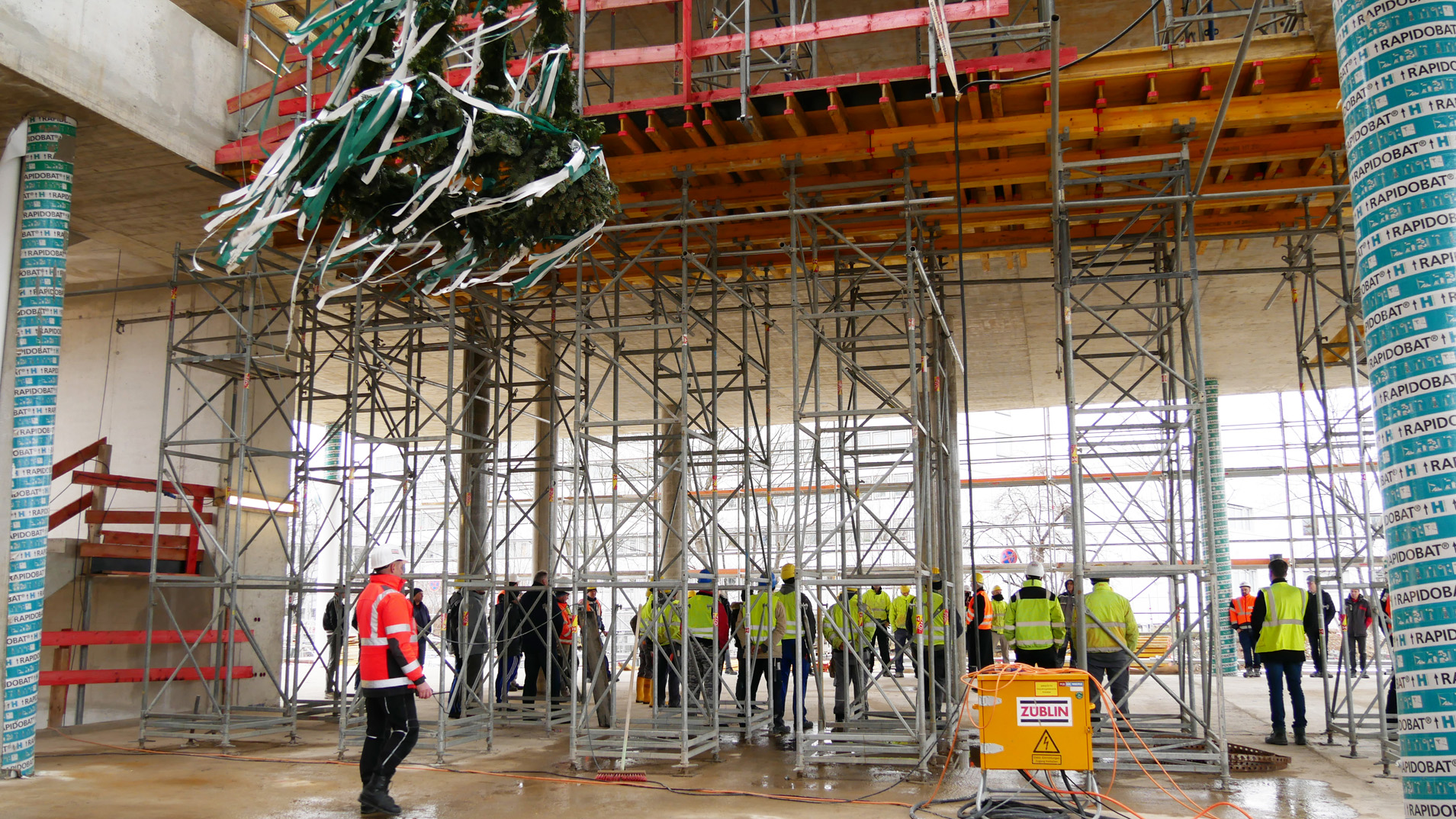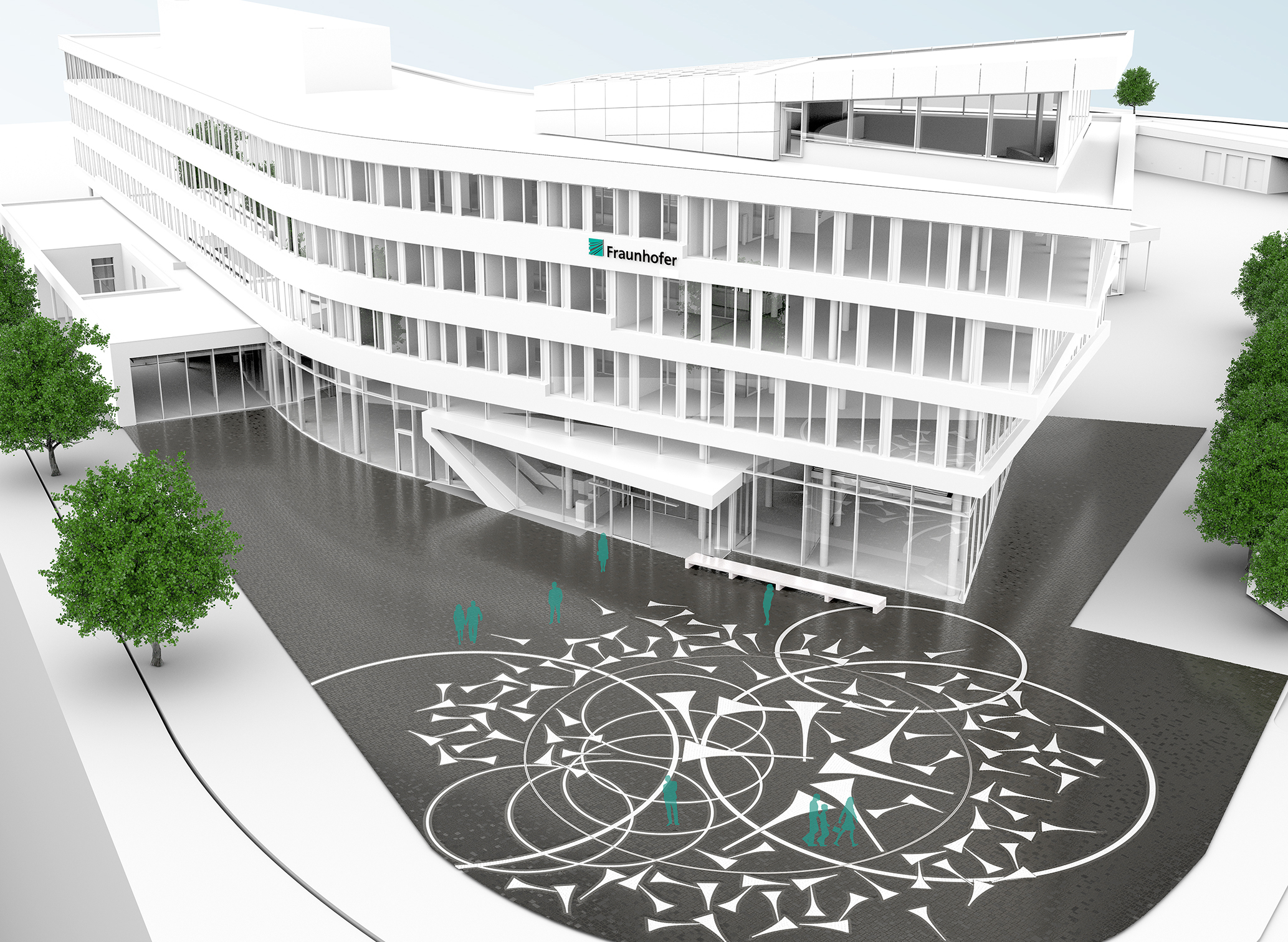Joint Research under one Roof
Since May 2022, employees have been working at the new Fraunhofer IEE Campus, Joseph-Beuys-Straße 8.
The locations, which were previously located throughout the city, have now been united under one roof.
Desk sharing and remote working from the home office allow the 450 employees to work together flexibly and efficiently in 5,350 m2 of office space, sharing 320 workstations in the new building. In addition, various laboratories are available to the specialist departments in the Technika on 2,150 m2.




